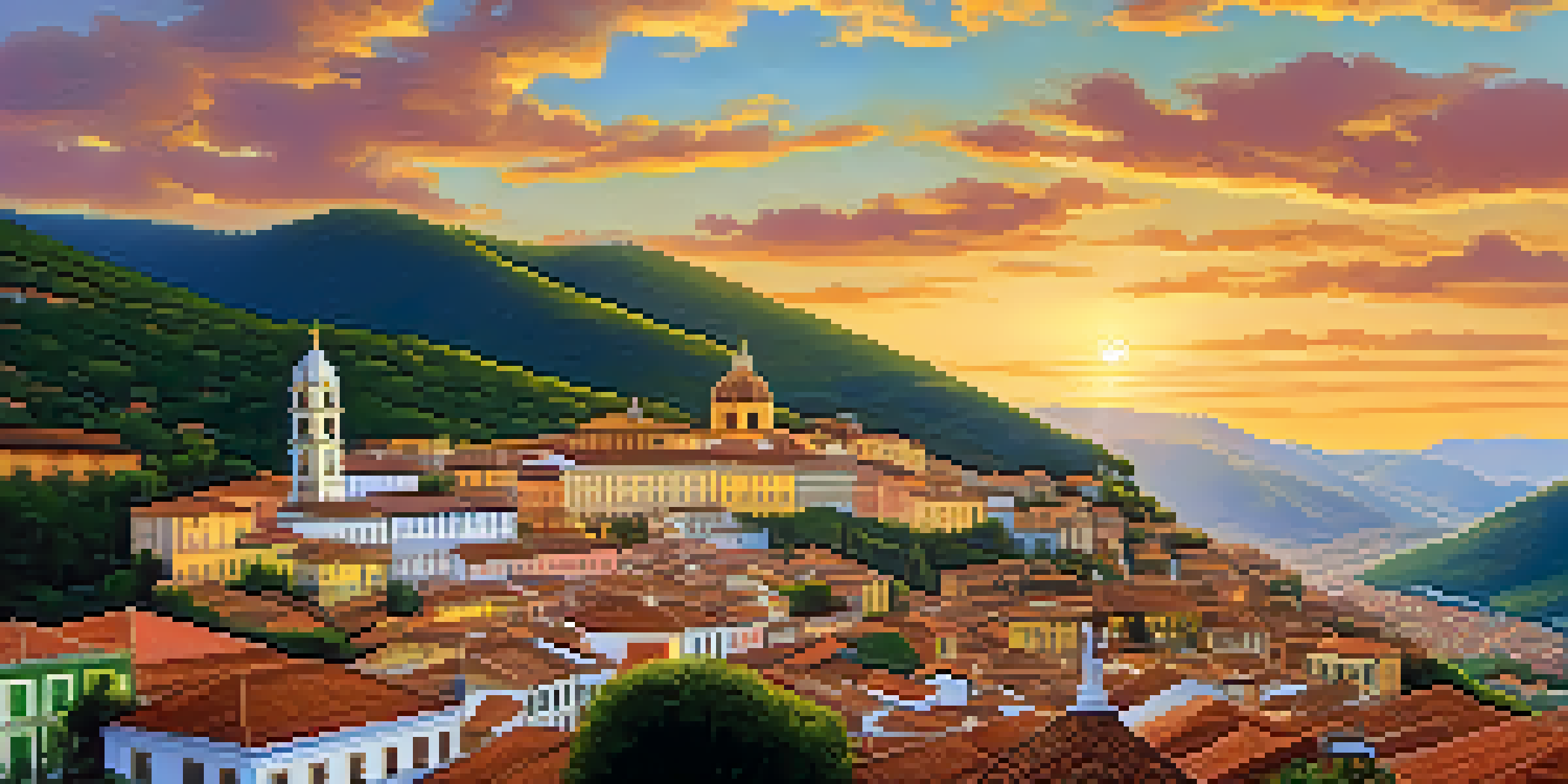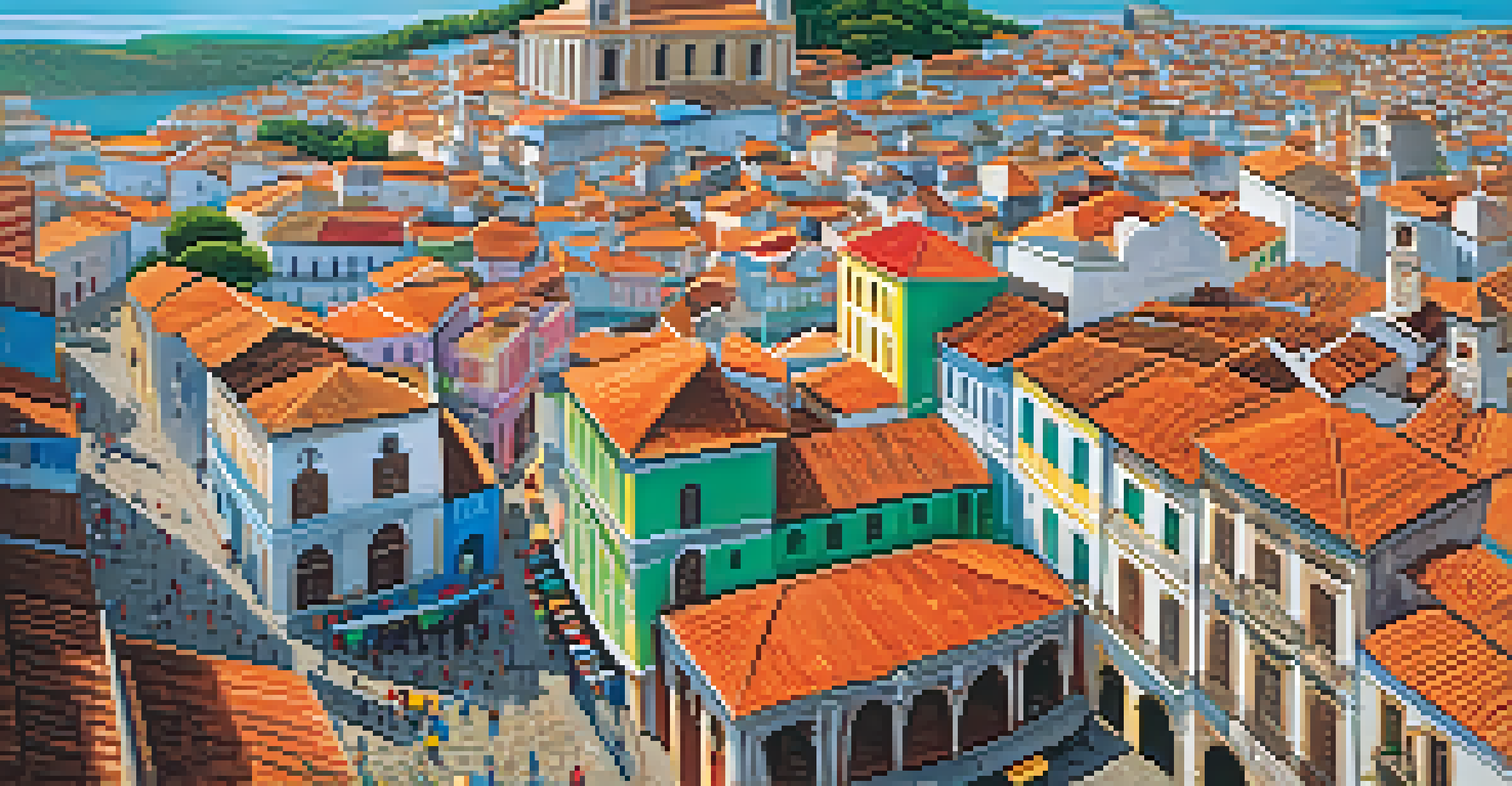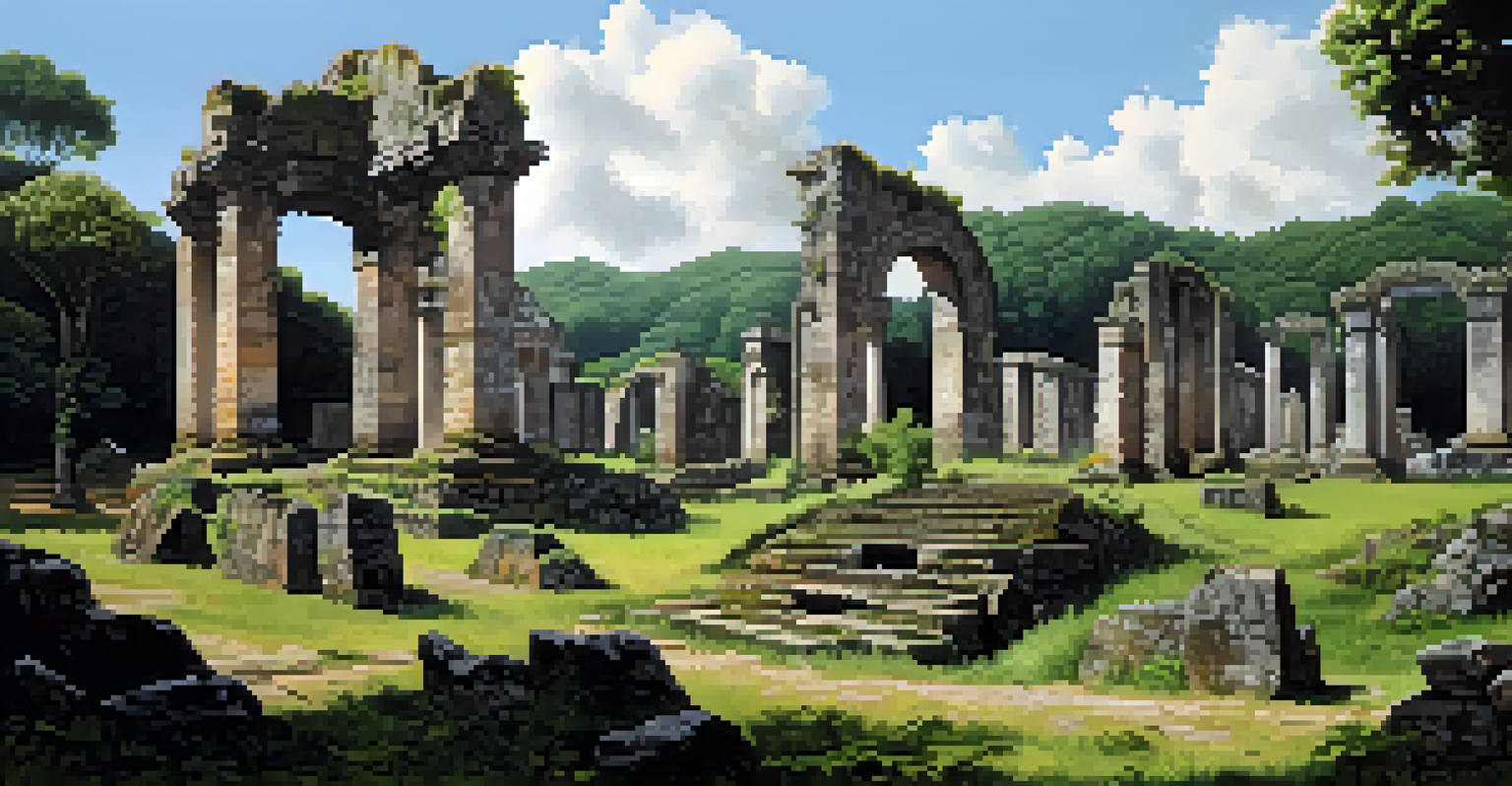Top Historical Sites in Brazil: A Guide for History Buffs

Discover the Colonial Charm of Ouro Preto
Ouro Preto, a UNESCO World Heritage site, is renowned for its stunning Baroque architecture and cobblestone streets. This historic town was once a thriving gold mining center and is rich with tales of Brazil's colonial past. As you wander through its narrow alleys, you'll encounter beautifully preserved churches and vibrant colonial mansions that take you back in time.
The past is never dead. It's not even past.
One of the highlights of Ouro Preto is the Church of San Francisco de Assis, a masterpiece by the famous architect Aleijadinho. The intricate woodwork and detailed sculptures inside are nothing short of breathtaking. This site not only reflects the artistic talent of the era but also serves as a reminder of the religious fervor that dominated colonial life.
Related Resource
Exploring Ouro Preto is like stepping into a living museum, where every corner tells a story. Whether you’re visiting its museums or enjoying local cuisine, this charming town offers a unique glimpse into Brazil's history that every history buff should experience.
Step Back in Time at the Historic Center of Salvador
Salvador, the capital of Bahia, boasts a historic center that is a vibrant tapestry of African, Portuguese, and indigenous influences. The Pelourinho district, with its colorful colonial buildings and lively atmosphere, is a UNESCO World Heritage site that draws visitors into its rich history. As you stroll through the streets, the sounds of samba and the aroma of local dishes create an immersive experience.

The São Francisco Church, famous for its gilded interior, stands as a testament to the wealth and artistry of the colonial period. The church's stunning baroque architecture and intricate details are a must-see for anyone interested in religious history. It’s a place where you can appreciate the fusion of cultures that has shaped Brazil's identity.
Explore Brazil's Colonial Heritage
Brazil's historic towns like Ouro Preto and Salvador showcase rich colonial architecture and vibrant cultural influences.
Whether you're visiting the lively markets or enjoying the street performances, Salvador offers a unique blend of history and culture. The vibrant energy of the city makes it a fascinating destination for history buffs looking to explore Brazil's diverse heritage.
Uncover the Secrets of Brasília’s Modernist Architecture
While Brasília may not have the traditional historical sites like Ouro Preto or Salvador, its modernist architecture tells a unique story. Designed by the visionary architect Oscar Niemeyer, the city was built in the 1960s to promote development in the interior of Brazil. The striking buildings, such as the National Congress and the Cathedral of Brasília, showcase innovative design and reflect the aspirations of a new nation.
History is a great teacher, but unfortunately it kills all its pupils.
Visitors to Brasília can explore the monumental axis, where many of the city's key attractions are located. Each building is not just a functional space but a work of art, meant to inspire and provoke thought. The design philosophy behind the city emphasizes space and light, creating a harmonious balance between architecture and nature.
Related Resource
Exploring Brasília is like visiting an open-air museum of modern architecture. For history buffs, the city offers insights into Brazil’s mid-20th century ambitions and the power of design in shaping a nation's identity.
Experience the Ruins of São Miguel das Missões
São Miguel das Missões is home to the remarkable ruins of a Jesuit mission that dates back to the 17th century. This UNESCO World Heritage site provides a glimpse into the complex interactions between European missionaries and indigenous peoples. The site features impressive stone structures that serve as a testament to the architectural skills of the time.
As you walk through the remains of the church and surrounding buildings, you can almost hear the echoes of the past. The mission was a center for education and agriculture, reflecting the Jesuits' efforts to integrate native cultures with European traditions. This historical context adds depth to your visit, making it more than just a sightseeing trip.
Experience Unique Modernism in Brasília
Brasília's modernist architecture, designed by Oscar Niemeyer, offers a distinct narrative of Brazil's mid-20th century ambitions.
Visiting São Miguel das Missões allows you to connect with a significant chapter in Brazilian history. It's a place where you can reflect on the cultural exchanges that shaped the region and appreciate the resilience of the indigenous communities.
Explore the Rich History of Recife and Olinda
Recife, known as the 'Venice of Brazil' for its many waterways, is a city steeped in history. Its historic center features beautiful colonial architecture and vibrant street art, showcasing the city's cultural evolution. Just a short distance away, Olinda, another UNESCO World Heritage site, is famous for its well-preserved colonial buildings and stunning views from its hilltop churches.
The historic sites in Olinda, such as the Church of the Most Holy Savior of the World, offer a deep dive into the religious and cultural heritage of Brazil. The intricate tile work and colorful facades reflect the artistic expression of the colonial period. Wandering through the streets of Olinda feels like stepping back into a time when sugar cane was king.
Related Resource
Visiting Recife and Olinda is an enriching experience for history buffs, as the cities offer a blend of cultural influences and a lively atmosphere. From traditional festivals to local cuisine, it's a journey through the diverse history of Brazil that you won't want to miss.
Journey Through Time at the Historic Town of Paraty
Paraty is a coastal town that perfectly encapsulates Brazil's colonial past. With its well-preserved colonial architecture and picturesque streets, it serves as a living museum of the 18th century. Once a bustling port for gold and coffee, Paraty now attracts visitors with its charming atmosphere and historical significance.
Walking through the town, you can admire the whitewashed buildings adorned with colorful shutters and intricate tile work. The cobblestone streets are lined with art galleries, cafes, and shops, inviting you to explore at a leisurely pace. The town's rich history is also showcased in its many cultural festivals throughout the year.
Connect with Brazil's Revolutionary Past
Towns like Tiradentes and Petrópolis allow visitors to engage with Brazil's journey toward independence and its imperial history.
Paraty offers a unique opportunity to experience Brazil’s colonial heritage while enjoying its natural beauty. Whether you're wandering through its streets or taking a boat tour of nearby islands, Paraty is a must-visit destination for history enthusiasts.
Discover the Legacy of the Inconfidência Mineira in Tiradentes
Tiradentes is a charming town closely associated with the Inconfidência Mineira, a revolutionary movement that sought independence from colonial rule. The town's well-preserved colonial architecture reflects its historical significance, making it a favorite destination for history buffs. The central square, with its vibrant yellow church and colonial buildings, is a perfect spot to start your exploration.
The Museu da Inconfidência offers an insightful look into the events that led to the movement and the figures involved, including the iconic Tiradentes himself. Through exhibits and artifacts, you can gain a deeper understanding of Brazil's struggle for independence. This museum serves as a reminder of the sacrifices made for freedom and the impact of those early revolutionary ideas.

Visiting Tiradentes is not just a historical lesson; it's an opportunity to connect with Brazil's past on a personal level. The town's serene atmosphere and rich history create a perfect backdrop for reflection and appreciation of the country's journey toward independence.
Experience the Story of the Brazilian Empire in Petrópolis
Petrópolis, known as the Imperial City, is a treasure trove of Brazilian imperial history. Nestled in the mountains, it served as a summer retreat for the Brazilian royalty in the 19th century. The city is home to the stunning Imperial Museum, housed in the former palace of Emperor Pedro II, which showcases a wealth of artifacts from the imperial era.
As you explore the museum, you’ll encounter everything from lavish furniture to royal attire, all offering a glimpse into the life of Brazil's monarchy. The surrounding gardens and architecture reflect the European influence on Brazilian culture during this period, creating a unique atmosphere that feels both regal and inviting.
Petrópolis invites history enthusiasts to delve into a fascinating chapter of Brazil's past. Whether you're touring the palace or enjoying the beautiful landscapes, the city promises an enriching experience that highlights the legacy of the Brazilian Empire.